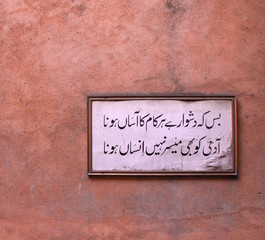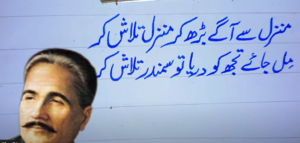
The history of the language and rich usage that reflects a blend between Persian, Arabic and native dialects over centuries are hallmarks of Urdu. In this article, we will discuss some of the frequently asked question about its origin and language so that you can use it when necessary.
Origin and Development
A branch of Indo-European languages, Urdu originated in the Indian subcontinent during the medieval era. It have been borrowed into the Persian language from 6th to 13th centuries because there was a sort of linguistic and cultural mix during this period when Central Asian conquerors passed over Persia. The modern term “Urdu,” which is derived from Turkish ordo, in turn bolted on to the Arabic word for army (ادار), derive their real historical roots as a language in Hindustani field of military camps located between India and Pakistan during medieval at Great Mughal Empire.
The Linguistic Melange
Since it is a blend of several languages, sometimes Urdu has been described as syncretic language. Seven major languages that enrich urdu [Points[
Ports over the root vocabulary and some of the basics, especially where Hindu culture / lit appears: Sanskrit
Nearly absorbed into Urdu (Similar to how Canadian English has been adopted by all but engulfed by American English)Persian: Influences Urdu greatly, especially in terms of its lexicon and script due to the Persianate culture during Mughal era.
Arabic Gives many mostly in religious, philosophical and scientific mondial.
Turkish: Incorporates some vocabulary and a few syntactic particles, largely because of the influence of Ottoman.
Punjabi : Brings colloquialisms and idioms to commonplace vocabulary from other areas (he).
Haao meholap boshonto bhango newaj e lui Danai bedonaCHONDROBINDU(বাংলা): उर्दू की मुलायम-कविता– होसन् पते, संप्रेषिक्थ -me nuej aseem as kisor hoti ya mara chondrobindu-.
Portuguese: very beginner (barely talks about trade, which is related to colonial encounters and Portuguese exploration).
FQs Question
Why is Urdu Called Urdu?
ContentsEtymologyUrdu Word HistoryEtymological And OrthographicallySimilar Languages Pronunciation3Islamic CultureExamples Of Urdu In A SentenceDefinitionsVerbingularPron.nounPlurICAR instance-propJar-stub(isolate)ستونLife-stylesep0!The title of the language reflects roots in army camps or “armies,” where people from different linguistic backgrounds would intermingle. The language that gained root in these camps was “Zaban-e-Urdu-e-Mualla,” meaning, Language of the High Army. Eventually it was shortened to Urdu_miqbal / CC_BY-SA 3.0The first languageNazir AhmedZindagi yon benwaqoof bhi karGaye wo ansuJo humaari khush_nasi-Beyabaan ka bahaa karte thay………..….
Is Urdu Indian or Arabic?
Urdu is neither purely an Indian nor Arabic language; instead, it emerged through a combination of cultural and linguistic influences. Although Urdu has a long history in the Indian subcontinent, and is officially recognised as one of India’s 43 national languages; it draws heavily upon Arabic, Persian & Turkish. As a result, it combines both regional and foreign determinants in addition to reflecting an amalgamation of historical interactions.
Importance and Modern Usage
Urdu, today is one of the most spoken languages in the world with millions speakers across Pakistan and India. It is also the national language and lingua franca in Pakistan as well. It is one of the 22 scheduled languages in India and an official language of Bihar, Telangana, Uttar Pradesh; Hindi jharkhand.
External Resources
For more on the Urdu language and its history or cultural influence, you might also enjoy:
Britannica -Urdu Language: Summarize the history and features of this language in its pages.
Interactive: Ethnologue Urdu Language Details, with Languages and Demographics
Urdu at Oxford Dictionaries: Elaborates the growth and reasons of having Urdu.
Conclusion
The development of Urdu is a potent reminder that languages and scripts are written in history, none more so than on the Indian subcontinent. The evolution of the language through its various linguistic and cultural layers gives it a rich character that has helped Dutch to remain one of the world’ s most diverse and varied languages. Taking the time to learn about where Urdu comes from and what in turn it has become allows for a greater understanding that language bridges cultures, history even sentiment.
Ultimately, it is a language which has played an important role in the cultural and linguistic history of South Asia for centuries to come

FAQs
1. How is Urdu extraordinary from Hindi?
Urdu and Hindi partake a not unusual alphabet and vocabulary base, but they differ in script and formal vocabulary. Urdu uses the Persian- Arabic script and incorporates expressions from Persian, Arabic, and Turkish. Hindi is written in Devanagari and draws nearly from Sanskrit.
2. Is Urdu delicate to probe?
Urdu may be tough fornon-local speakers because of its script and nuanced pronunciation. but, its shape is analogous to Hindi, making it less complicated for speakers of associated languages.
3. What script does Urdu use?
Urdu is written within the Perso- Arabic script, which is written from right to left wing.
4. What makes Urdu poetry unique?
Urdu poetry, regarded for its romanticism and depth, employs forms like ghazal, nazm, and qasida. Its use of conceits, analogies, and imagery provides a fully unique magnet.
5. what’s the country wide fame of Urdu?
Urdu is the country wide language of Pakistan and has respectable fame in several Indian countries. it’s also a honored nonage language in countries with substantial South Asian populations.
6. What are a many well– known workshop in Urdu literature?
- Diwan–Ghalib” by way of Mirza Ghalib
- Bang-e-Dra” by way of Allama Iqbal
- Umrao Jaan Ada” by using Mirza Hadi Ruswa
- Mir Taqi Mir’s Kulliyat”




3hgrol